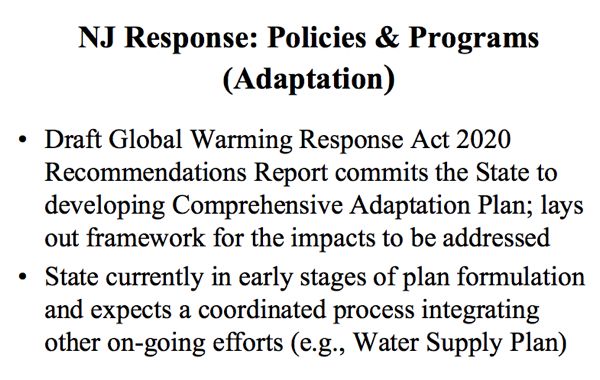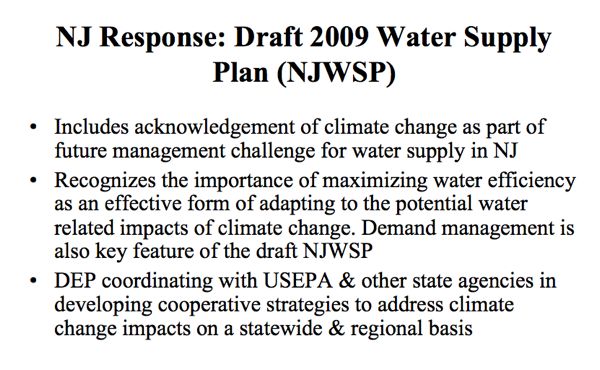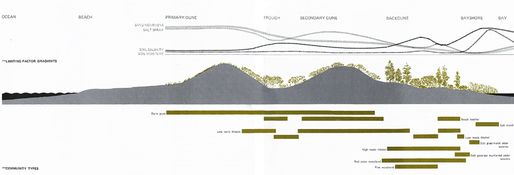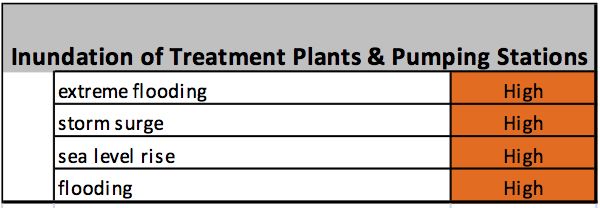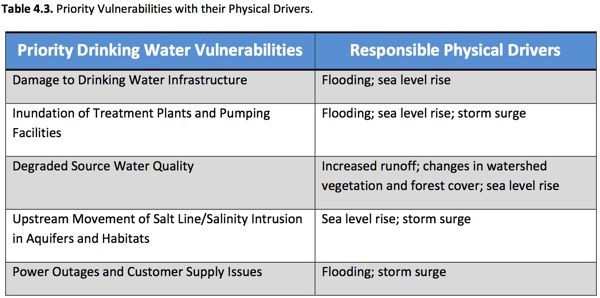Pinelands Commission Caught on Tape – A Glimpse Into What They Really Think
Commissioners Show Disdain for Public Criticism
Director Wittenberg Defends “Biased” Pipeline Review Process Based on Experience as Builders Assc. Lobbyist
Month after month after month Stacy warned you that the pipeline was coming. The public was here. We did not keep this a secret. It’s not my fault they missed it. ~~~ Director Wittenberg (9/13/13) (download MP3 and listen)
“I don’t really care what the public thinks” ~~ Pinelands Commissioner
The Pinelands Commission came under sharp criticism from the public during the September 13, 2013 public comment session, including an unexpected presentation by a CWA union representative that disturbed the public and prompted even harsher public criticism (see this for coverage of that hearing).
At the very end of that hearing, after the Commission had returned from a closed Executive Session, they re-opened the hearing and went back on the public record. By that time, the public was long gone and the room was empty.
Apparently not realizing that they were being recorded, the Commissioners spoke bluntly amongst themselves, sometimes expressing frustration and disdain for public criticism they had received earlier in the day.
They also discussed serious substantive issues, which I’ll highlight below.
The discussion is quite revealing of how they think and deliberate amongst themselves.
We were given a 14 minute section of the audio tape of that discussion. You can download MP3 and listen to it here.
Aside from the various frustrations they expressed, I will note the following significant substantive issues that need to be followed up on – all of which I had raised in testimony during the September 13 hearing and that Commissioners and staff were responding to:
1) The Pre-application review process created an appearance of agency capture – one Commissioner called this “bias”
A Commissioner agrees with my testimony that the pre-application review process, which began in April 2012 and was not made to the public for over a year, is “biased”.
I’m much closer to Bill Wolfe perhaps than others in this room – I’ve had this conversation with Commissioners for years. It does bias things. I wish I could go to the judge before I file a complaint. It does bias things, its not a one way street”
Director Wittenberg immediately challenged that view:
You know that in a previous life when I worked with the Builders Assc. and the Builders get ballistic about that because they may not have even bought the property yet and they’re coming in to find out about requirements
First of all, Ms. Wittenberg is way out of line here. Her job is to follow the policy lead of the Commissioners, not to challenge their views and debate policy.
We have previously opposed Ms. Wittenberg’s appointments as an Assistant Commissioner at DEP and by Governor Christie at the Pinelands precisely because of her background with the NJ Builders Assc.
We have said that Wittenberg is hostile to environmental regulations and can not objectively administer and enforce those regulations.
And in this discussion, she confirms our concerns and injects arguments and argues as if she were representing the Builders Assc.
And Wittenberg’s argument is a straw man – South Jersey Gas pre-application review process was nothing like the example she offered, of a builder who had not yet acquired land innocently coming in to meet with the Commission to understand what permit requirements applied. Nothing at all like that.
2) The Commission needs an independent expert to review South Jersey Gas Company’s proposal and fill gaps in staff expertise
A Commissioner recommended that an independent expert be hired to review the pipeline proposal.
That recommendation appears to have been rejected – although it is not clear why. Listen closely and see if you can figure it out. See also point # 6 below.
3) The Commission is in denial on climate change
The Commission appears to have accepted Counselor Roth’s informal, off hand, verbal legal opinion and rejected jurisdiction to review climate change impacts – and has denied my Open Public Records Act (OPRA) request to disclose the written legal reasoning behind this crucial decision.
For more on the climate issues, see this and this and this.
4) The Commission lacks standards or Guidance to implement the MOA requirement that a project provide an “equivalent level of protection” or to define and weigh “offsets” that can demonstrate an equivalent level off protection
This crucial issue is discussed very briefly on the tape.
Both Wittenberg and a Commissioner admit that the Commission lacks standards.
The Commission is highly vulnerable to legal challenge and scathing valid public criticism for these fatal gaps in regulations.
The Commission risks losing all public credibility if the MOA “offset” is a cash payment from South Jersey Gas – the reasonable public perception will be that Commission is not independent, not science based, not preserving the pines and enforcing the law – and that it can be bought and sold.
In fact, there are rumors right now that the deal will be for $20 million.
5) Director Wittenberg and Counselor Roth are manipulating the Commissioners and the public in support of the pipeline project
Director Wittenberg makes a whole bunch of arguments, all of them biased or flawed, and seeming as if they came from the lawyer for South Jersey Gas Co.. or the Governor’s Office. Here are a few examples of that:
a) After mentioning that there are “miles and miles and miles of pipelines” through the Pines (presumably to suggest that they are no big deal and are having no adverse impacts on the Pines). Wittenberg:
But I would never say that when the real public is here
But Wittenberg fails to mention that they were built BEFORE the Pinelands Act was passed and that the Pinelands Act – unlike the Highlands Act – does not exempt them from review but instead they are not an allowable use in the forest area
b) In what seems to be an attempt to deflect public criticism that the Commission is exclusively reliant on the scientific and engineering claims of South Jersey Gas Co. and lacks independent science, Wittenberg claims that she was planning to allow the Chief Pinelands staff scientist to testify, but that the public would “crucify” him because he doesn’t have a PhD.
That is nonsense.
Maybe Wittenberg doesn’t want public testimony from a scientist with integrity – someone who might openly talk about the limits of his expertise and the need for additional expert support.
Or maybe he would mention that those “miles and miles and miles” of pipelines Wittenberg mentioned were grandfathered – or maybe he might speak about a pipeline that was built without a MOA, a violation that undermines the argument the Commission now supports in favor of a MOA.
[clarification, from a knowledgeable reader:
Nancy fails to mention that they were built before the Pinelands Act or met the CMP requirement that they serve the needs of Pinelands residents. There have been pipes in some areas of the pines that service the needs of Pinelands residents. These pipes that are smaller. They are 12 & 16 inch and at a lower pressure.
6. South Jersey Gas Has had an inside track and exclusive technical input to staff and the Commission for over a year and a half. That access must be balanced by public concerns and independent data and viewpoints.
There is a confused and rambling discussion about science, objectivity, independence, expertise, impartiality, and opinion.
This confusion is then expanded with respect to the Commission’s responsibilities to make independent, science based regulatory policy decisions that reflect public sentiment and public comment.
Both Ms. Wittenberg and Ms. Roth aggressively shape this discussion and disparage critics, while narrowing the scope of their review. They aggressively reject independent expert support and a scientist requested by project opponents.
Do Ms. Wittenberg and Ms. Roth seriously think South Jersey Gas officials are “independent” or “impartial” or not “advocates??
There is even a remark by Wittenberg that clearly demonstrates that the Attorney General’s Office has provided some kind of legal guidance about the public request to have the opponents’ scientists, Mr. Heately, make a 30 minute presentation to balance all the time and opportunity for access and input to staff provided to South Jersey Gas Co.
South Jersey Gas Co. was given several months of one on one meetings with Pinelands Commission staff- perhaps dozens of hours and multiple meetings.
It is clear that South Jersey Gas also had access to Counselor Roth during the BPU review process – Ms. Roth made two presentations to the Commissioners from April – June and advised them that a MOA was being negotiated and drafted.
I also suspect that their was a coordinated project review team of BPU, DEP and someone from the Pinelands COmmisison, either Wittenberg or Roth.
Based on my experience in state government, I also suspect that there were meetings with the Governor’s Office that Ms. Wittenberg attended – perhaps even without the knowledge of the Commissioners, nonetheless the public.
Ms. Wittenberg also may have had involvement with the BL England portion of the project while she was an Assistant Commissioner for Environmental Regulation at DEP – this is why I testified back in July to suggest that Wittenberg undergo some kind of conflict of interest, post employment restriction, or recusal review.
Last, South Jersey Gas was given an opportunity to publicly present their plan – that lasted about an hour (view the SJG powerpoint here).
So after all this, it is bizarre that public requests for independent scientific review are so harshly dismissed on this tape.
And finally, contrary to Ms. Wittenberg’s assertion, Counselor Stacy Roth did not provide “months and months” of “warnings that the pipeline was coming”.
Ms. Roth never mentioned that the BPU proceeding was underway and that the Commission and the public should participate in the BPU proceedings. A neutral professional lawyer would do that.
Ms Roth never gave the Commissioners and the public a heads up that DEP air and water permits were under review and that the Commission and public should participate in those permit proceedings. A neutral professional lawyer would do that too.
Instead, Ms. Roth provided briefings that highlighted the benefits of the project, ignored the criticisms of the project, and acted in support of the project .
Roth implied that it was a done deal and – way back in April – that a MOA was under negotiation with BPU and pinelands planner Larry Liggett.
Contrary to Director Wittenberg’s claims, those are not Paul Revere warnings of a neutral professional lawyer- that’s Chinatown.
